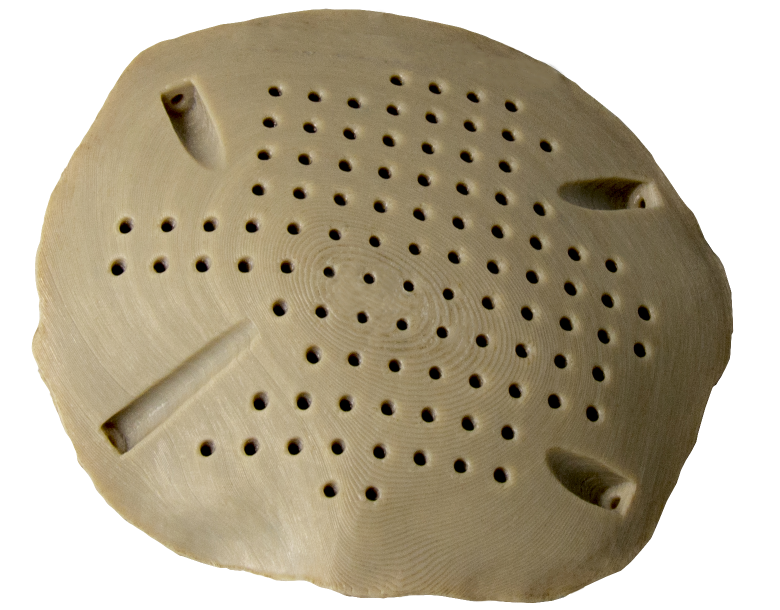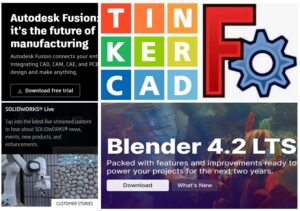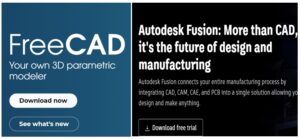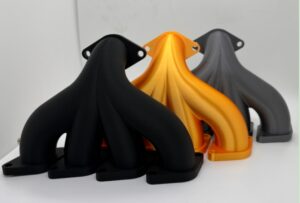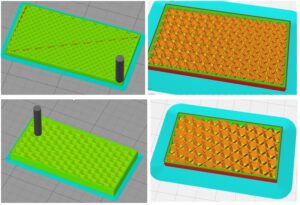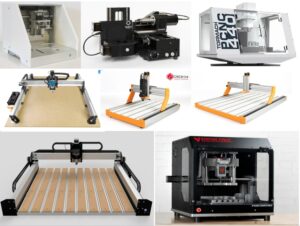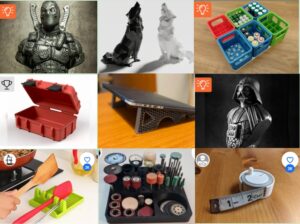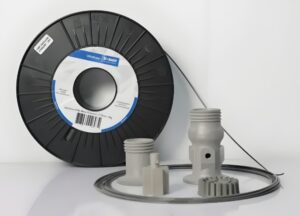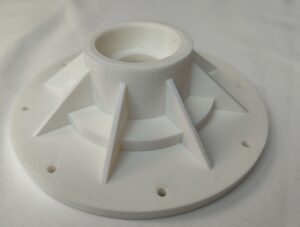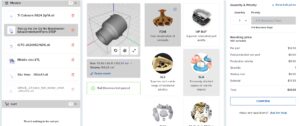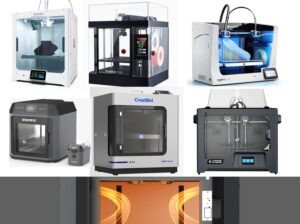Mastering 3D Printing: A Guide to Printing High-Performance Materials like PEEK and PPS
FDM 3D printing is compatible with a wide range of materials. It can print common plastics like PLA and PETG, as well as engineering plastics such as ABS, PC, PC/ABS, and Nylon. Additionally, elastic materials like TPU and TPE have also found extensive applications. These plastics are currently being used in various industries including drones, transportation, tires, helmets, shoe insoles, and more.
The application of challenging specialty engineering plastics such as PPS and PEEK is becoming increasingly mature. This article aims to help readers understand how to successfully 3D print materials like PEEK and PPS by analyzing their characteristics.
Content
- What is PPS? Its advantages and applications.
- What is PEEK? Its advantages and applications.
- The mechanical performance of PPS & PEEK
- How to successfully print PEEK & PPS?
What is PPS?
PPS has a density of 1.34-1.36 g/cm³ and a melting point of 280°C. As a crystalline thermoplastic polymer, linear PPS has a high crystallinity of up to 70%. Its glass transition temperature is 92°C, and it has a decomposition temperature greater than 400°C.
Mechanical properties: PPS exhibits excellent heat resistance and can be used over a wide temperature range. Its strength retention at high temperatures is significantly higher than that of PBT, PET, PC, and other engineering plastics.
Thermal properties: PPS is a crystalline polymer with a high degree of purity, reaching up to 65%. It has a high melting point of 280-290°C and begins to decompose only above 430-460°C in air. Its thermal stability far exceeds that of PA, PBT, POM, and PTFE. PPS can withstand instantaneous heat temperatures of up to 260°C and long-term use temperatures of 200-220°C. Additionally, it exhibits excellent flame retardancy, meeting UL94U-D classification.
Dimensional stability: PPS has outstanding dimensional stability, with a molding shrinkage rate of 0.15%-0.3%, which can be as low as 0.01%. Furthermore, its water absorption rate is only 0.05%.
Chemical resistance: PPS has excellent corrosion resistance similar to PTFE. It is resistant to acids, alkalis, chlorinated hydrocarbons, and other chemicals. It is insoluble in any organic solvents below 200 degrees and maintains its rigidity and tensile strength even after 2000 hours of exposure to air erosion, with only slight decreases. Additionally, it possesses good radiation resistance.
Electrical properties: PPS exhibits excellent electrical performance, with a dielectric constant of 3.9, low dielectric loss, and a high resistivity of up to 10^16 ohms.
Application areas of PPS:
The main applications of PPS are in industries that require high temperatures, sufficient mechanical performance, and have high demands for chemical corrosion resistance and flame retardancy. These industries include nuclear energy, rockets, satellites, aerospace, petroleum, chemical, automotive, atomic energy, electronic, electrical, mechanical, chemical, and medical equipment.
What is PEEK?
PEEK has a density of 1.265-1.32 g/cm³ and a melting point of 334°C (similar to polytetrafluoroethylene) and is a semi-crystalline polymer material.
Mechanical properties: PEEK is a material that balances toughness and rigidity. The tensile strength of 3D printed PEEK can reach 90 MPa, and the flexural modulus can exceed 3000 MPa. Additionally, PEEK exhibits excellent wear resistance and fatigue resistance.
Thermal properties: PEEK is one of the highest temperature-resistant plastics among specialty plastics. It can withstand continuous operating temperatures of up to 260°C and short-term working temperatures of up to 300°C. Furthermore, PEEK has a low thermal expansion coefficient, resulting in minimal dimensional changes with temperature. It achieves a flame retardant rating of UL94V-0.
Dimensional stability: PEEK is minimally affected by long-term storage, prolonged use, and external friction forces. It has low susceptibility to hydrolysis, with a saturated water absorption rate of only 0.5% at 23°C. PEEK can be used in pressurized hot water and steam at 300°C for long periods.
Chemical resistance: PEEK exhibits excellent resistance to chemical substances, except for concentrated sulfuric acid. Even at higher temperatures, it maintains good chemical stability.
Electrical properties: PEEK possesses outstanding electrical insulation properties with a dielectric constant of 3.2-3.3 F/m. Under 1 kHz conditions, it has a dielectric loss of 0.0016 and a breakdown voltage of 17 kV/mm. It has an arc resistance of 175V.
Application Areas Of PEEK
Despite its relatively short development history, PEEK has been widely used in aerospace, military, rocketry, nuclear power, rail transportation, medical, and electronic fields due to its superior high-temperature resistance, corrosion resistance, chemical resistance, friction resistance, and excellent insulation properties. Its lightweight and high strength characteristics have contributed to its broad application.
The mechanical performance of 3D Printed PPS & PEEK
Material | Young’s modulus | Tensile strength | Elongation at break | Bending modulus | Bending strength | Charpy impact strength |
PPS | 3700 | 90 | 8 | 3700 | 143 | 28 |
PEEK | 3738 | 98 | 9.1 | 3612 | 147 | 7.1 |
How to successfully 3D print PEEK & PPS?
PPS and PEEK both possess excellent flowability and high flow rates, which means that these materials can be effectively processed as long as suitable methods are employed.
For PPS printing settings, the following parameters are recommended:
- Drying:Drying for 3 hours at 148 °C
- Material of the nozzle: Brass, and it must be the first time use
- Nozzle temperature: 310-360°C
- Platform temperature: 100°C
- Printing Speed:50-80mm/s
- Chamber temperature: 133-162°C
- Cooling Fan: 50%, 1ST layer off
- Plate: PVA glue on glass. Carbon Fiber Plate is good as well.
- After print:Professional annealing is essential to improve the dimensional stability and strength of printed parts.Please contact our technical team [email protected] for any help.
For PEEK printing settings, the following parameters are recommended:
- Drying:Drying for 4 hours at 150 °C or 2 hours at 190 °C
- Material of the nozzle: Brass
- Nozzle temperature: 410°C
- Platform temperature: 130°C
- Printing Speed: 50-80mm/s
- Cooling Fan: 100% on or 100% off, depends on the printers.
- Plate: PVA glue on glass. Carbon Fiber Plate is good as well.
- First layer is super important.
- After print:Professional annealing is essential to improve the dimensional stability and strength of printed parts.Please contact our technical team [email protected] for any help.

